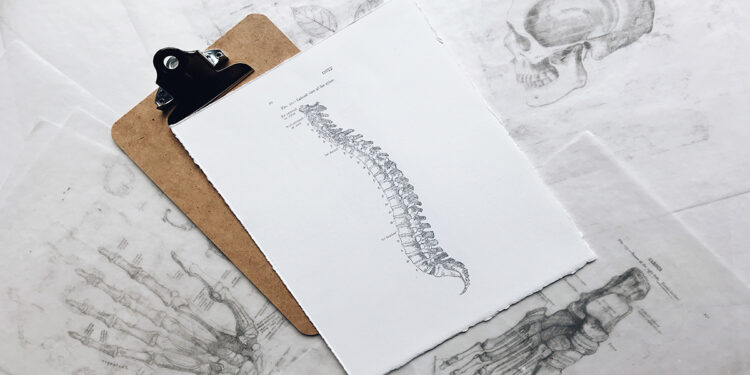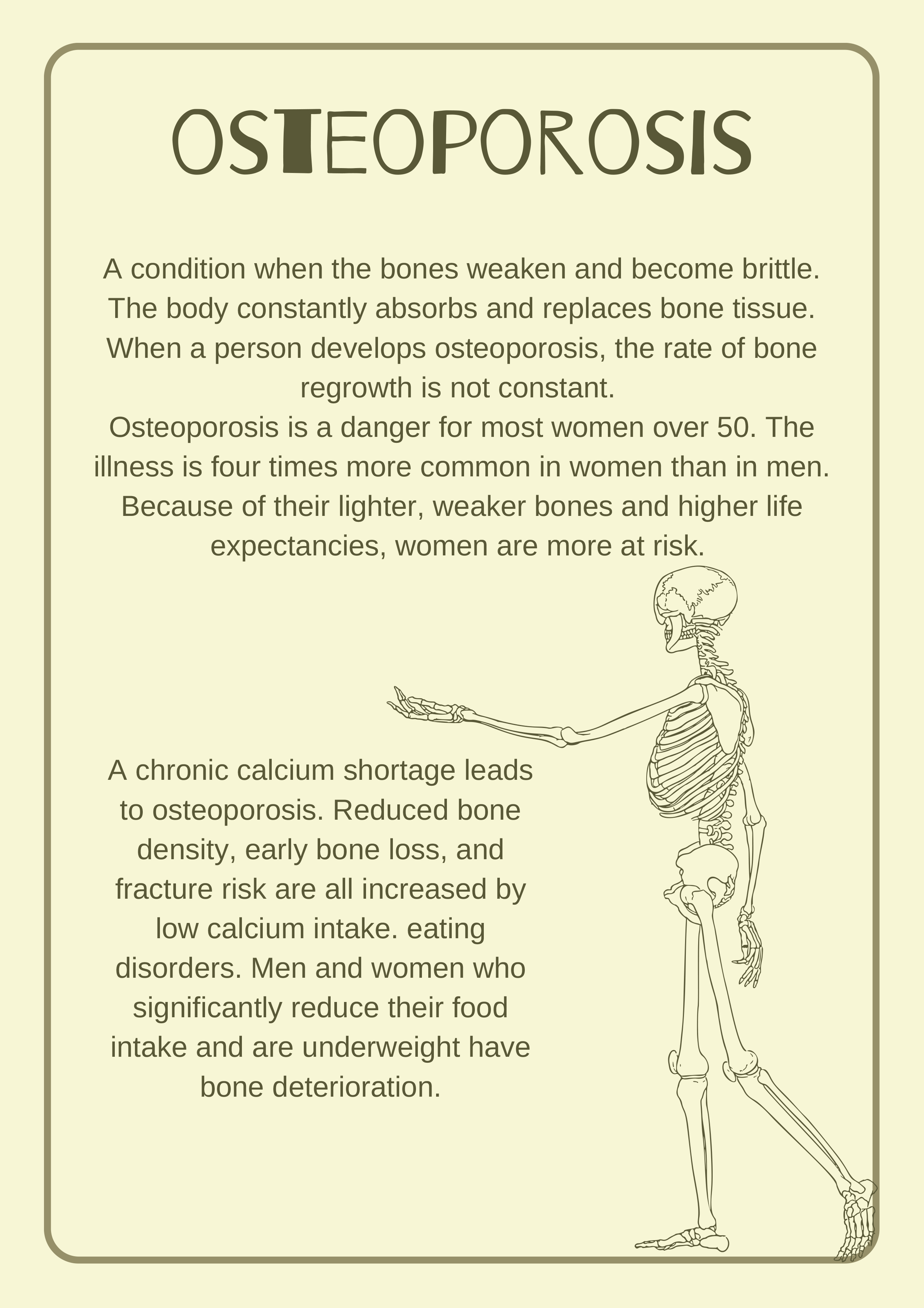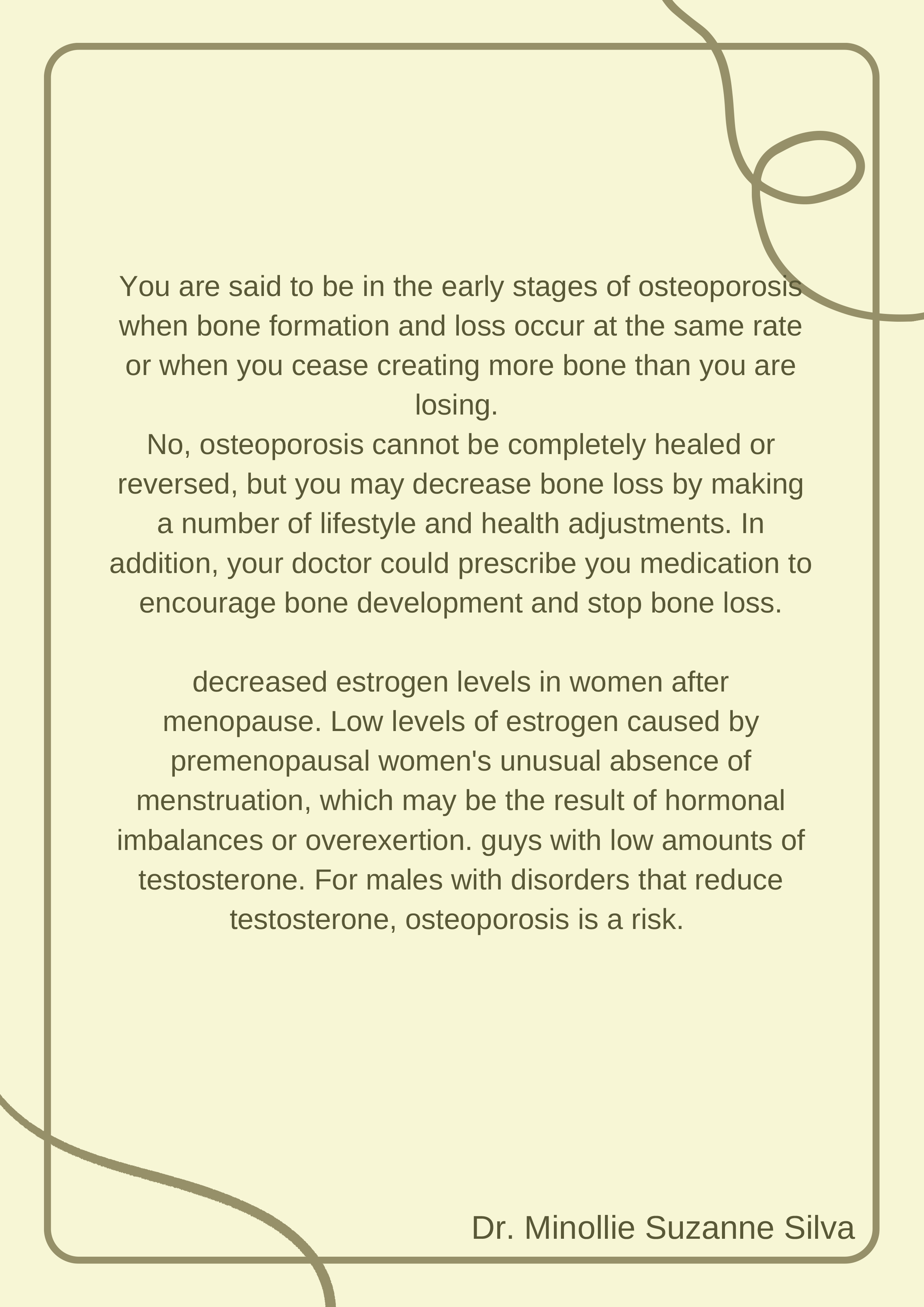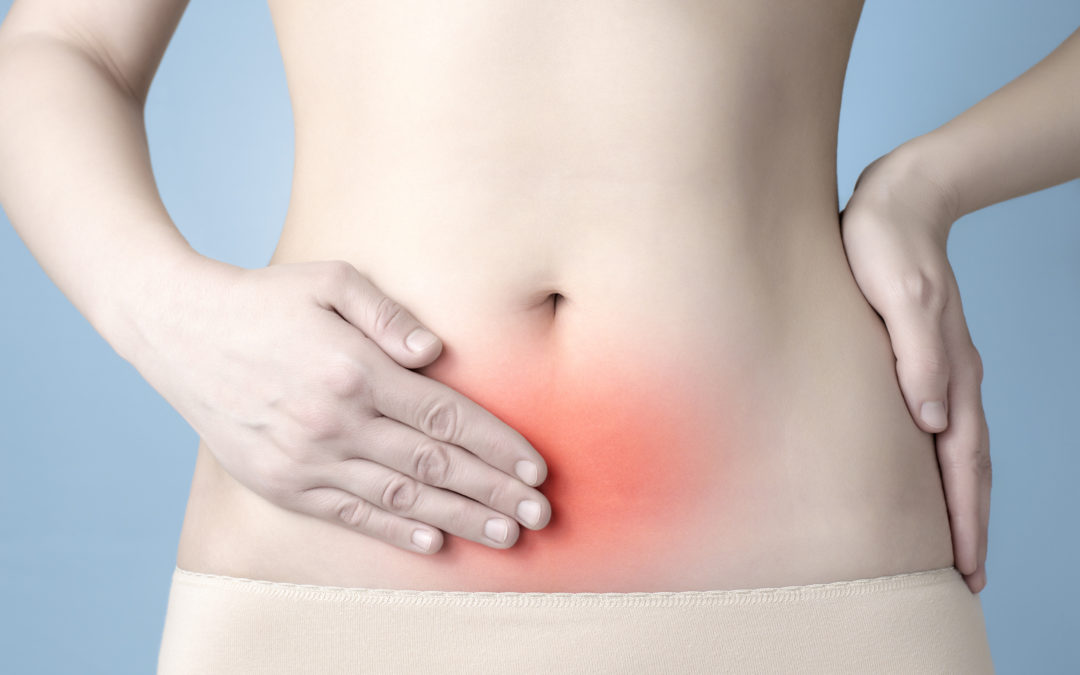WHAT IS OSTEOPOROSIS?

OSTEOPOROSIS
A condition when the bones weaken and become brittle. The body constantly absorbs and replaces bone tissue. When a person develops osteoporosis, the rate of bone regrowth is not constant.
Osteoporosis is a danger for most women over 50. The illness is four times more common in women than in men. Because of their lighter, weaker bones and higher life expectancies, women are more at risk.
A chronic calcium shortage leads to osteoporosis. Reduced bone density, early bone loss, and fracture risk are all increased by low calcium intake. eating disorders. Men and women who significantly reduce their food intake and are underweight have bone deterioration.
Five main symptoms of osteoporosis
- Fractures brought on by fragility. These happen when a wrist, back, hip, or other bone is fractured as a result of even a minor accident.
- Loss of height. Over time, a person’s height might decrease by more than two inches.
- A bent, stooping form to the spine;
- Receding gums;
- Low back discomfort.
Osteoporosis increases the risk of fracturing a bone. Nearly half of all women over the age of 50 will experience a hip, wrist, or vertebral (spinal) fracture at some point in their life. The spine is involved in most fractures. Your body needs the minerals calcium and phosphate to build and maintain healthy bones.
However, some signs—like receding gums, a weakening grip, and more brittle fingernails—might be early warning signs. Bone fractures, a loss of height, a slumped posture, soreness in the neck or back, and these symptoms are the most typical indications of later-stage osteoporosis.
You are said to be in the early stages of osteoporosis when bone formation and loss occur at the same rate or when you cease creating more bone than you are losing.
No, osteoporosis cannot be completely healed or reversed, but you may decrease bone loss by making a number of lifestyle and health adjustments. In addition, your doctor could prescribe you medication to encourage bone development and stop bone loss.
decreased estrogen levels in women after menopause. Low levels of oestrogen caused by premenopausal women’s unusual absence of menstruation, which may be the result of hormonal imbalances or overexertion. guys with low amounts of testosterone. For males with disorders that reduce testosterone, osteoporosis is a risk.
The most used method for calculating bone mineral density is dual-energy X-ray absorptiometry (DXA). It is a quick, painless, and simple exam. While you are laying on a soft surface, a low-level x-ray scanner called a DXA analyses your body.
Usually, osteoporosis is the first condition that bisphosphonates are used to treat. One of these is the once-weekly Alendronate tablet (Fosamax). Weekly or monthly risedronate tablets (Actonel).
What activities should someone with osteoporosis avoid?
Jumping, running, or jogging can break bones that are already fragile. Always strive to avoid making sudden, swift movements. Choose exercises that need calm, controlled movement.
Your body loses calcium when you eat foods high in sodium (sodium), which might lead to bone loss. Reduce the amount of processed foods, canned foods, and salt in your diet on a regular basis. If you want to know how much salt is in a food, look at the Nutrition Facts label.










